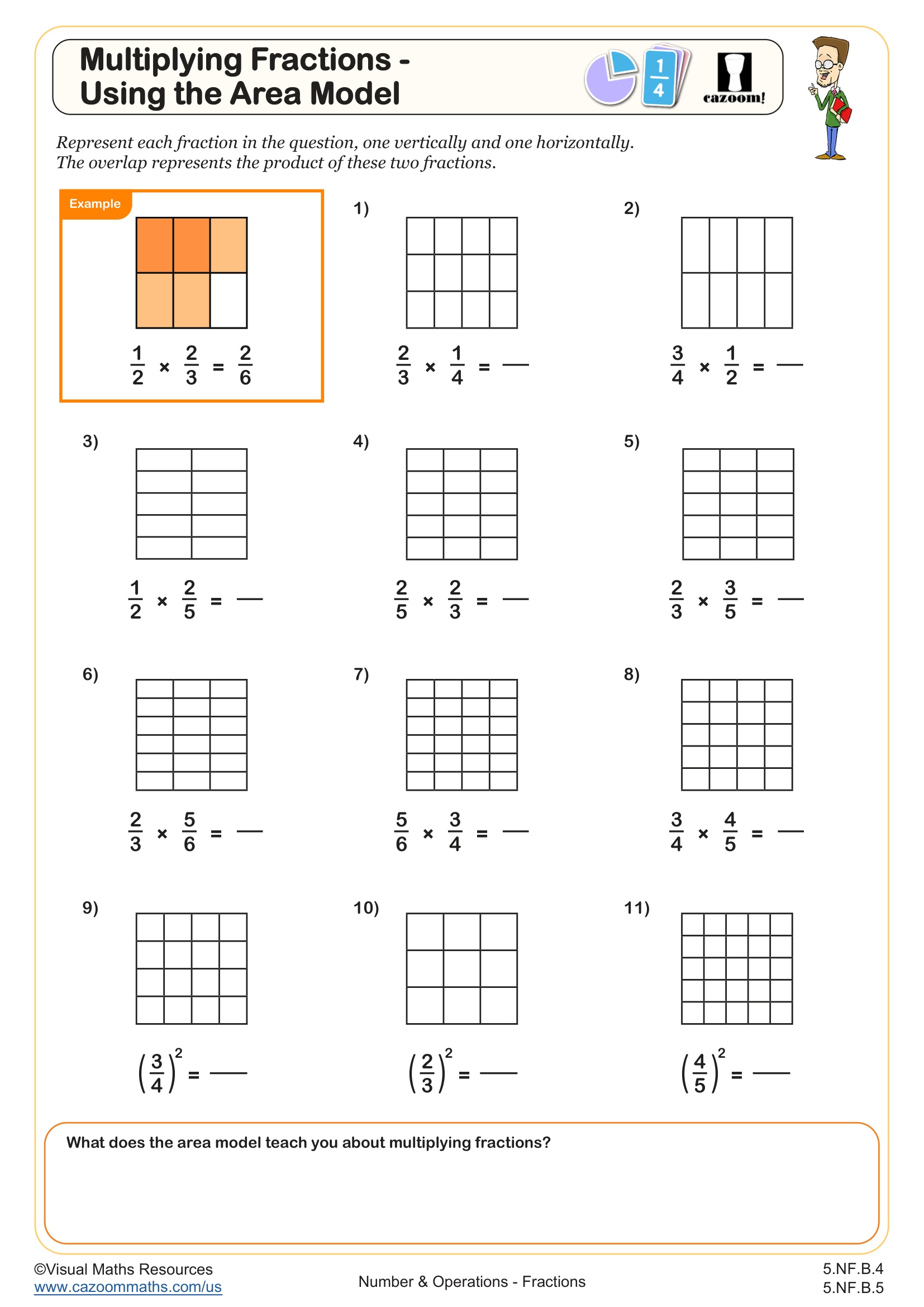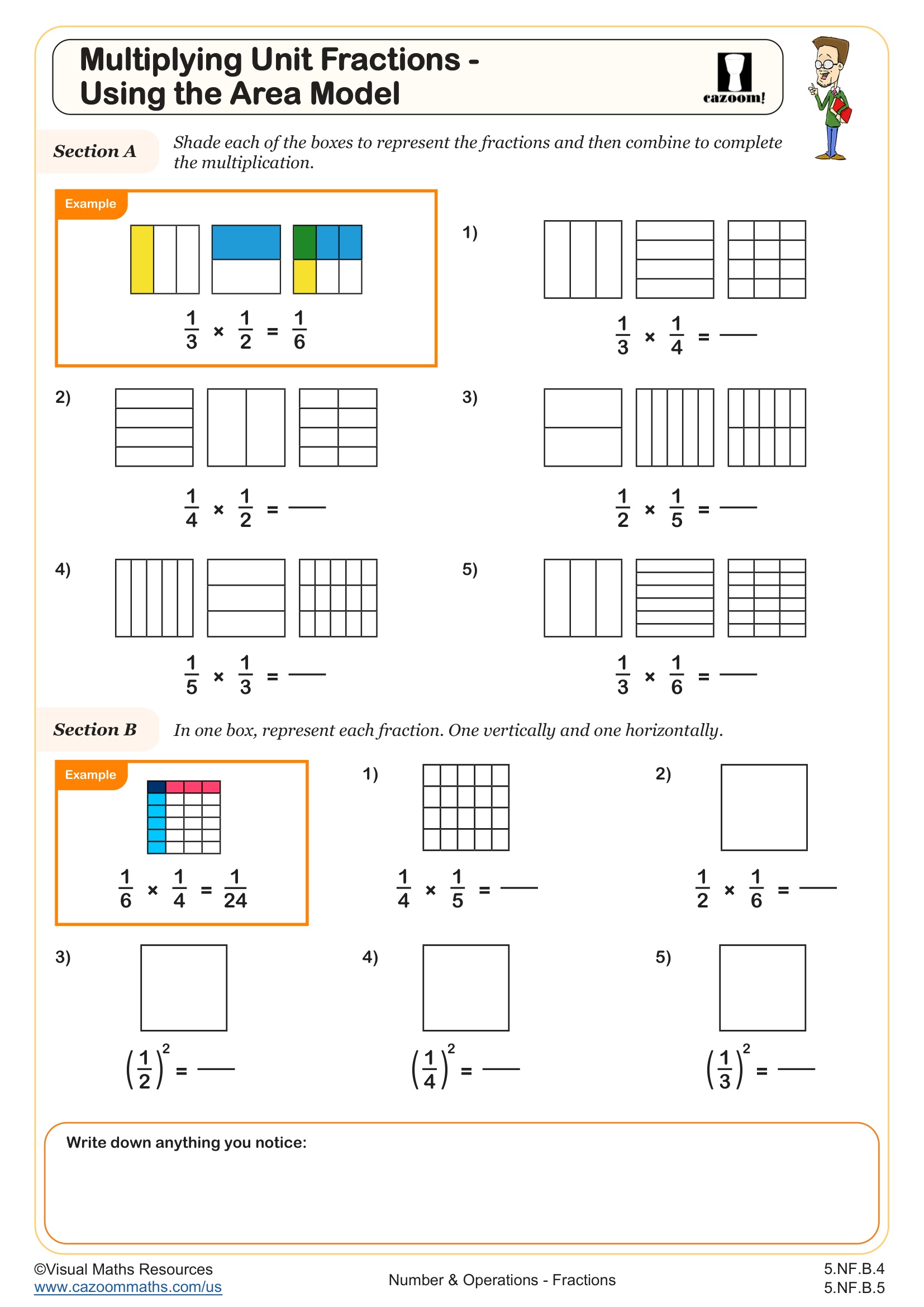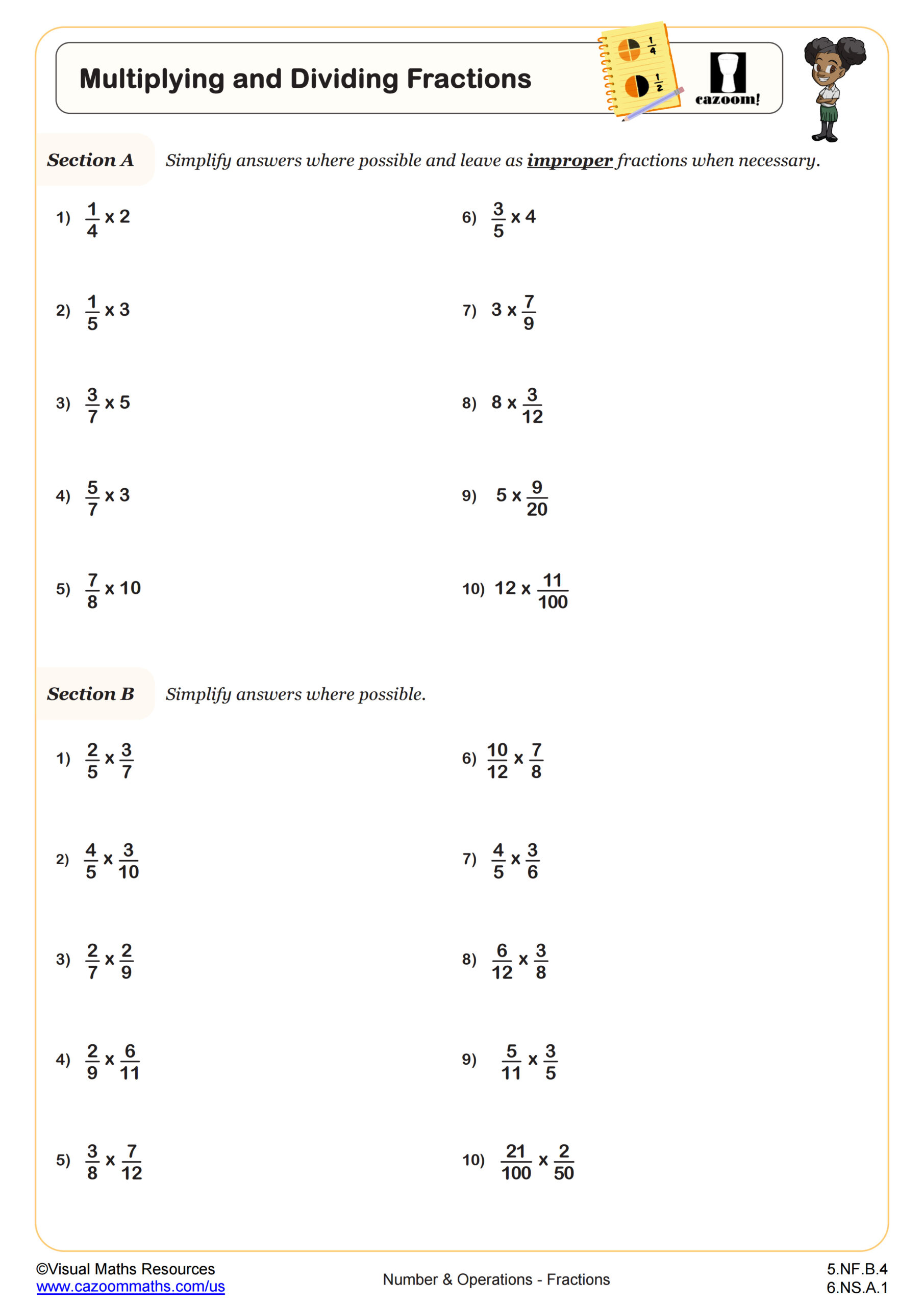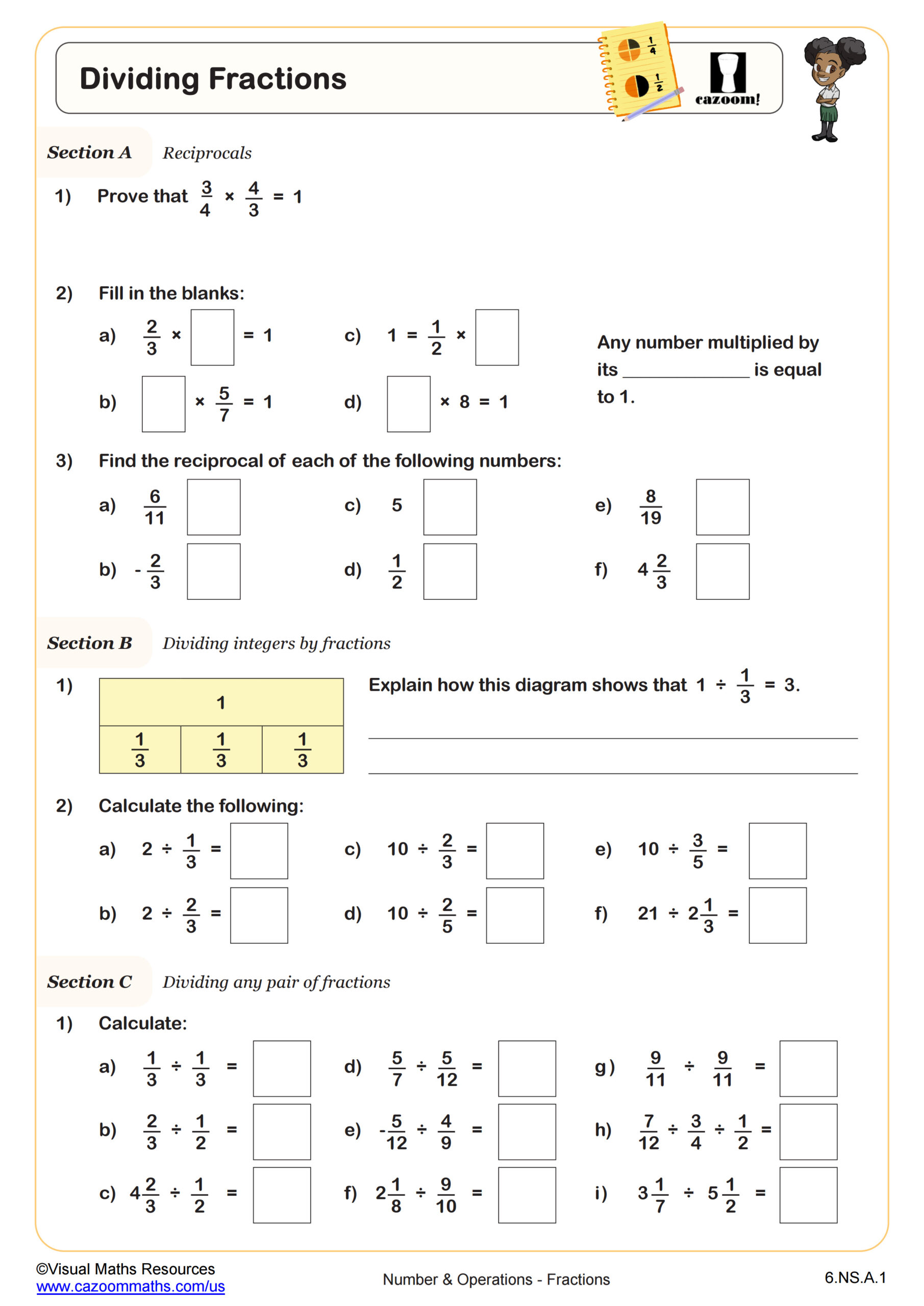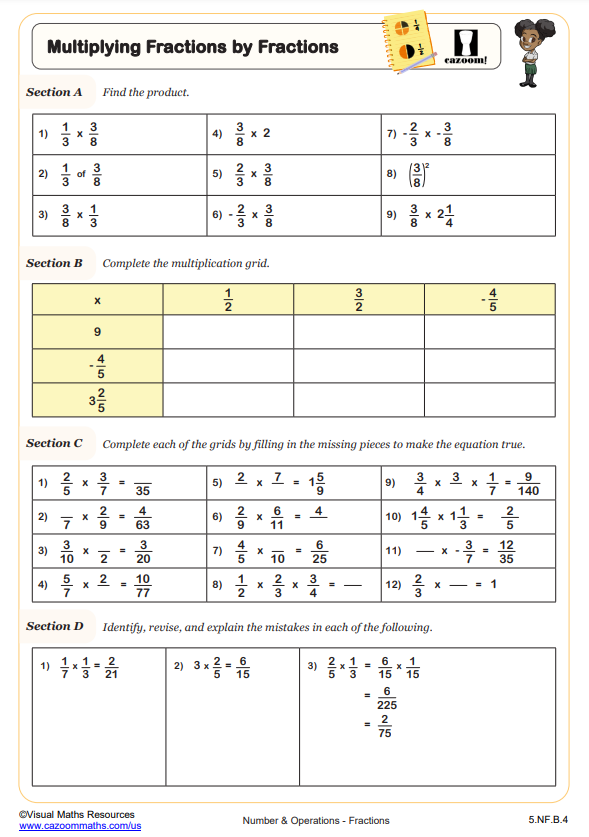Back to:
Multiplying Fractions - Using the Area Model WORKSHEET
Suitable for Grades: 5th Grade
CCSS: 5.NF.B.4, 5.NF.B.5
CCSS Description: Apply and extend previous understandings of multiplication to multiply a fraction or whole number by a fraction. a. Interpret the product (a/b) × q as a parts of a partition of q into b equal parts; equivalently, as the result of a sequence of operations a × q ÷ b. For example, use a visual fraction model to show (2/3) × 4 = 8/3, and create a story context for this equation. Do the same with (2/3) × (4/5) = 8/15. (In general, (a/b) × (c/d) = ac/bd.) b. Find the area of a rectangle with fractional side lengths by tiling it with unit squares of the appropriate unit fraction side lengths, and show that the area is the same as would be found by multiplying the side lengths. Multiply fractional side lengths to find areas of rectangles, and represent fraction products as rectangular areas.
Interpret multiplication as scaling (resizing), by: - Explaining why multiplying a given number by a fraction greater than 1 results in a product greater than the given number (recognizing multiplication by whole numbers greater than 1 as a familiar case); explaining why multiplying a given number by a fraction less than 1 results in a product smaller than the given number; and relating the principle of fraction equivalence a/b = (n×a)/(n×b) to the effect of multiplying a/b by 1. - Comparing the size of a product to the size of one factor on the basis of the size of the other factor, without performing the indicated multiplication.
Interpret multiplication as scaling (resizing), by: - Explaining why multiplying a given number by a fraction greater than 1 results in a product greater than the given number (recognizing multiplication by whole numbers greater than 1 as a familiar case); explaining why multiplying a given number by a fraction less than 1 results in a product smaller than the given number; and relating the principle of fraction equivalence a/b = (n×a)/(n×b) to the effect of multiplying a/b by 1. - Comparing the size of a product to the size of one factor on the basis of the size of the other factor, without performing the indicated multiplication.
Multiplying Fractions - Using the Area Model WORKSHEET DESCRIPTION
Using the area model to multiply fractions is a visual and intuitive method that helps students understand the concept of fraction multiplication. This method involves drawing a rectangle to represent the whole and then dividing it into smaller parts vertically and horizontally to represent the fractions being multiplied.
The worksheet begins with an example which is followed by eleven questions for students to answer. All rectangles to be shaded are already split into the required number of rows and columns to further support students.
At the end of the worksheet, pupils are asked to comment on anything they notice.
